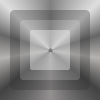No, for equal intensities (when all three colours add up to white) then green is seen as much brighter, much more luminous. According to my estimates if full white is 100% brightness then red is as bright as 16% white, green 73% and blue 11%. But that is why there are twice as many green pixels in a camera, since we're much more sensitive to green then we're also much more sensitive to its noise, so capturing more green lowers that green noise and gives better results. See this picture, each colour is at its fullest, and it's clear that green is much brighterlnikj wrote:Ok, got you, I think. Because of the 2 Gs for every R and B in most sensors?

Just like Multiply blending between two layers (in image editors). Or like this https://www.youtube.com/watch?v=IA3KZbfJGD8 but with an image and a sound instead of two sounds.though I don't really understand it?












